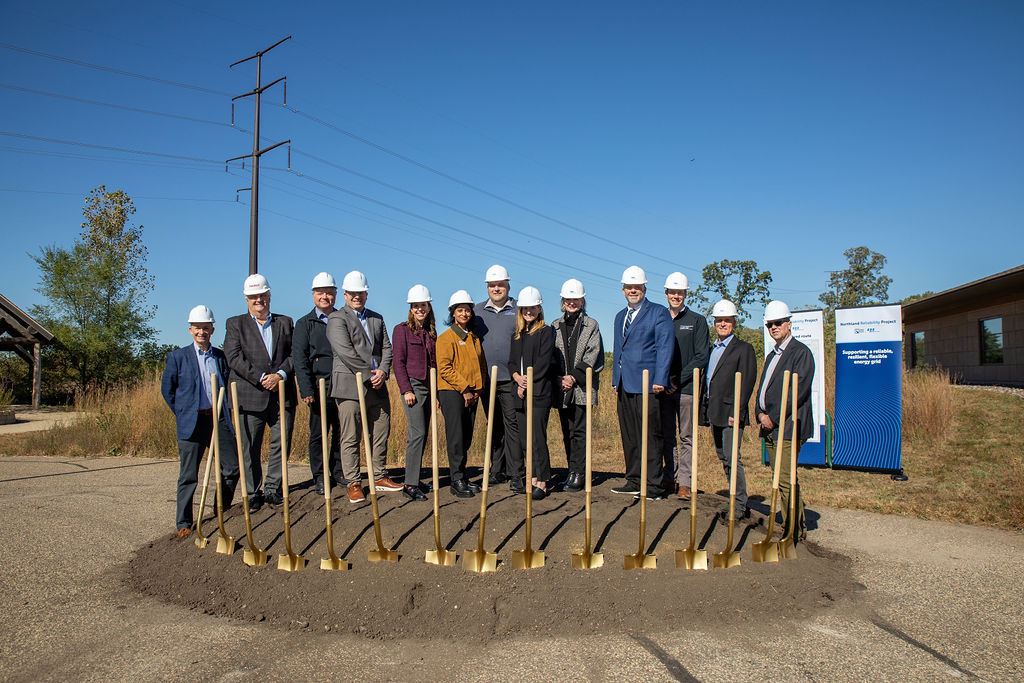Great River Energy and the nine other utilities that make up the CapX2020 organization convened last August to discuss a study that would examine how the changing generation resource mix will impact transmission system operations and reliability. After months of collaboration and analysis, they recently issued the CapX2050 Transmission Vision Report.
The report identifies the critical elements necessary for continued safe, reliable and affordable electric grid operation as well as the long-term policies and procedures needed to transition to a future with more non-dispatchable (wind, solar) generation resources.
The CapX2050 Transmission Vision Report identifies the critical elements necessary for continued safe, reliable and affordable electric grid operation as well as the long-term policies and procedures needed to transition to a future with more renewable generation resources.
“We know there is a trend toward fleet transition,” said Priti Patel, Great River Energy vice president and chief transmission officer. “This work was designed to help us understand what these kinds of changes mean from a transmission perspective. More importantly, it was intended to be a critical first step toward helping policymakers and stakeholders better understand the implications of a future that is more reliant on non-dispatchable generation.”
The report highlights challenges transmission planners and operators may face as energy production in the region evolves. While traditional generation is dispatchable—meaning their production and output can be operated and controlled as needed—many of these generation facilities will be retired in the coming years.
An increasing number of new, intermittent energy resources will be added to the electric system. The report contemplates how growing use of these non-dispatchable resources will impact the region’s transmission system in the future.
“The CapX2020 members have a unified objective,” Patel said. “We are all responsible for making sure we are providing our customers with reliable, safe and affordable energy. Part of that responsibility is making sure that the transmission system is ready for the future.”
Though no specific new transmission projects were identified, the report highlights a need for additional grid infrastructure—in the form of either new high voltage lines or the development of new advanced technologies—in order to maintain a strong, reliable transmission system. As the industry continues to evaluate and monitor how those still-emerging improvements unfold, the utilities report the following findings:
- Dispatchable resources support the electric grid in ways that non-dispatchable resources presently cannot; and therefore, some dispatchable resources will be necessary.
- The ability for system operators to meet real-time operational demands will be more challenging; and therefore, we will need to develop new tools and operating procedures to address the challenges.
- More transmission system infrastructure will be needed in the Upper Midwest to accommodate the transition of resources.
- Non-dispatchable resources alone will be incapable of meeting all consumer energy requirements at all times and therefore, we will need to understand and promote a future electric grid that can continue to meet consumer energy requirements safely, reliably and affordably.
“We are confident that through collaborative, forward-looking planning, we and our CapX2020 partners will be able to successfully identify solutions in a reduced-carbon future to ensure the stability and reliability of the transmission system is maintained using the most cost-effective solutions,” Patel said.
The CapX2020 utilities are Central Municipal Power Agency/Services, Dairyland Power Cooperative, Great River Energy, Minnesota Power, Missouri River Energy Services, Otter Tail Power Company, Rochester Public Utilities, Southern Minnesota Municipal Power Agency, WPPI Energy and Xcel Energy.
 " data-object-fit="cover">
" data-object-fit="cover">